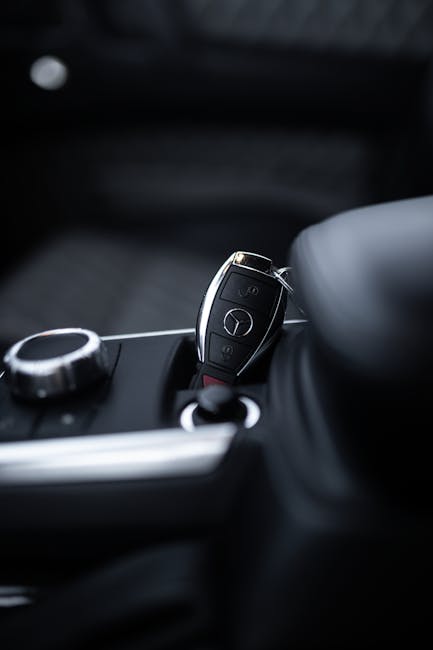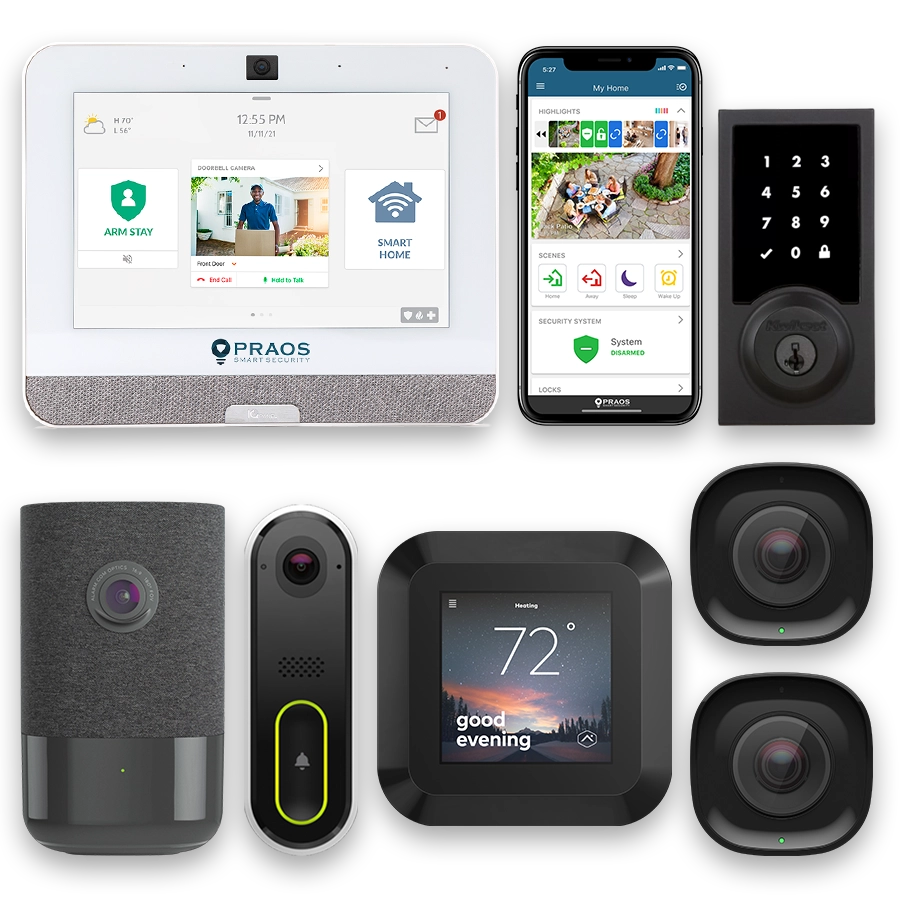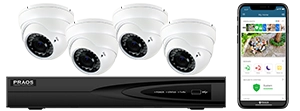Introduction to Solar-Powered Home Security Systems
In recent years, the intersection of renewable energy and home security technology has garnered considerable attention. Integrating solar panels with home security systems represents an eco-friendly and cost-effective approach to safeguarding residential properties. This synergy leverages the continual advancements in solar technology and robust security measures to create a sustainable and reliable security framework.
Solar-powered home security systems operate by harnessing solar energy through photovoltaic (PV) panels, which convert sunlight into electrical power. This power is then used to run various security devices, such as cameras, lights, alarm systems, and motion detectors. The integration of these two technologies overcomes traditional limitations associated with conventional security systems, particularly in terms of electrical power dependency and operational costs.
One of the fundamental components of a solar-powered security system is the solar panel itself. These panels are typically installed on rooftops or other locations with maximum sun exposure. The energy captured by the panels is stored in batteries, ensuring that the security system can function even during nighttime or cloudy weather conditions. Advances in battery storage technology, such as lithium-ion batteries, have significantly improved the efficiency and reliability of these systems.
The flexibility of solar-powered security systems is another notable feature. These systems can be deployed in various settings, ranging from urban homes to remote properties, where access to a stable power grid might be limited. This makes them an ideal choice for areas prone to frequent power outages or in locations aiming to reduce their carbon footprint.
Installation of these systems is often straightforward, but it necessitates careful planning to ensure optimal performance. Critical considerations include the positioning of solar panels to maximize sunlight exposure, selecting compatible components, and integrating the system with existing security infrastructure. Moreover, professional installation is recommended to ensure compliance with local regulations and safety standards.
While the initial investment in solar-powered security systems might be higher compared to traditional setups, the long-term savings on electricity bills and the reduced need for grid power make them a cost-effective solution. Additionally, many regions offer incentives, such as tax credits and rebates, to promote the adoption of solar energy, further offsetting the initial expenses.
In conclusion, solar-powered home security systems represent a convergence of sustainability and technology, offering a robust solution for modern security needs. By understanding the key components and considerations involved, homeowners can effectively harness solar energy to enhance their security measures while contributing to environmental conservation.
Benefits of Integrating Solar Panels with Home Security
Integrating solar panels with your home security system offers a range of benefits beyond just environmental sustainability. Below, we explore these advantages in detail.
Cost Savings
One of the most compelling benefits is the potential for significant cost savings. By utilizing solar energy, homeowners can reduce their reliance on grid electricity, which translates to lower utility bills. Over time, these savings can offset the initial investment in solar panels and security system integrations.
Energy Independence
Solar panels enable greater energy independence, especially during power outages. Traditional security systems can be vulnerable during blackouts, potentially leaving homes unprotected. Solar panels, when paired with battery storage, ensure that security systems remain operational, maintaining the safety of the home regardless of grid conditions.
Environmental Impact
Another significant benefit is the reduction of carbon footprint. Solar energy is a clean, renewable resource that diminishes greenhouse gas emissions. Integrating solar panels with your home security system contributes to environmental sustainability by reducing dependence on fossil fuels.
Consistency and Reliability
Solar-powered security systems are typically more consistent and reliable than those dependent solely on grid electricity. Solar panels generate power as long as there is sunlight, reducing the likelihood of system failures caused by grid issues or electrical malfunctions.
Enhanced Property Value
Installing solar panels and an integrated security system can enhance the value of the property. Potential buyers are increasingly looking for homes with energy-efficient and technologically advanced features. This can make the property more attractive in the real estate market.
Government Incentives
There are various government incentives available for homeowners who install solar panels. These may include tax credits, rebates, and even grants, making the cost of installation more manageable and financially appealing.
Table: Summary of Benefits
| Benefit | Description |
|---|---|
| Cost Savings | Reduces reliance on grid electricity, lowering utility bills over time. |
| Energy Independence | Keeps security systems operational during power outages. |
| Environmental Impact | Reduces carbon footprint through the use of renewable energy. |
| Consistency and Reliability | Provides a more consistent power supply, reducing system failures. |
| Enhanced Property Value | Makes the property more attractive in the real estate market. |
| Government Incentives | Various tax credits, rebates, and grants available for installation. |
By understanding these key benefits, homeowners can make an informed decision about integrating solar panels with their home security systems, contributing to financial savings, energy reliability, and environmental sustainability.
Assessing Your Home’s Solar Potential
Assessing your home’s solar potential is a crucial step in integrating solar panels with your home security system. This involves evaluating several factors that will determine the feasibility and efficiency of your solar setup.
Geographical Location
Your home’s geographical location significantly impacts its solar potential. Regions closer to the equator receive more direct sunlight throughout the year, making them ideal for solar power. Conversely, areas at higher latitudes may experience reduced solar insolation, particularly during the winter months.
Solar Irradiance
Solar irradiance, or the amount of solar power received per unit area, is a key metric to consider. The National Renewable Energy Laboratory (NREL) provides extensive solar resource data that can help you determine the average solar irradiance in your area. Generally, areas with higher irradiance are more suitable for solar panel installations.
Roof Orientation and Tilt
The orientation and tilt of your roof also play a significant role in capturing solar energy. For homes in the Northern Hemisphere, south-facing roofs are ideal because they receive the most sunlight. The optimal tilt angle for your solar panels typically matches your location’s latitude. However, flexible mounting systems can adjust the angle to maximize solar capture throughout the year.
Shading and Obstructions
Shading from trees, buildings, or other obstructions can significantly reduce the efficiency of your solar panels. Conduct a shading analysis to identify any potential obstacles that could cast shadows on your roof. Tools like the Solar Pathfinder or online resources such as Google’s Project Sunroof can help you assess shading issues and determine the best placement for your panels.
Roof Condition
Before installing solar panels, assess the current condition of your roof. Solar panels generally have a lifespan of 25 to 30 years, so it’s important to ensure that your roof is in good condition and won’t require significant repairs or replacement during that time. If necessary, consider addressing any roofing issues before proceeding with the solar installation.
Local Regulations and Incentives
Be aware of local building codes, zoning laws, and homeowner association rules that may impact your solar panel installation. Additionally, research available incentives, such as federal tax credits, state rebates, or local utility programs that can help offset installation costs. The Database of State Incentives for Renewables and Efficiency (DSIRE) is a valuable resource for finding incentives in your area.
By thoroughly assessing your home’s solar potential, you can make informed decisions and optimize the integration of solar panels with your home security system.
Selecting the Right Solar Panels for Security Systems
When selecting the right solar panels for your home security system, several factors must be considered to ensure optimal performance and compatibility. This chapter provides an in-depth guide on how to choose the best solar panels tailored to your security needs.
Types of Solar Panels
There are three primary types of solar panels available on the market:
- Monocrystalline Panels: Known for their high efficiency and longevity, these panels are ideal for areas with limited space.
- Polycrystalline Panels: Generally more affordable but slightly less efficient than monocrystalline panels.
- Thin-Film Panels: Easier to install and more versatile in their applications but usually less efficient and durable.
Factors to Consider
When choosing solar panels for your home security system, consider the following factors:
- Efficiency: The efficiency of a solar panel determines how much sunlight it can convert into usable energy. Higher efficiency panels are generally preferred for maximizing power output.
- Size and Space: Evaluate the available space for installing solar panels. Monocrystalline panels are typically more space-efficient compared to polycrystalline and thin-film panels.
- Durability: Solar panels must withstand various weather conditions. Ensure the panels selected have appropriate certifications for weather resistance.
- Cost: Consider the cost involved in purchasing and installing the solar panels. Keep in mind that higher efficiency panels may have a higher initial cost but could offer better long-term savings.
- Warranty: Check the warranty period for the solar panels. A longer warranty period generally indicates better quality and reliability.
Comparing Specifications
The table below compares key specifications of the different types of solar panels:
| Specification | Monocrystalline | Polycrystalline | Thin-Film |
|---|---|---|---|
| Efficiency Rate | 15-20% | 13-16% | 10-12% |
| Space Requirement | Low | Medium | High |
| Durability | High | Medium | Low |
| Cost | High | Medium | Low |
| Warranty | 25 years | 20–25 years | 10–20 years |
By carefully considering these factors and comparing the specifications of available solar panels, homeowners can make an informed decision that ensures their home security systems are efficiently powered and maintained over time.
Integrating Solar Panels with Existing Home Security Infrastructure
Integrating solar panels with your existing home security infrastructure involves multiple steps, ensuring that the systems work harmoniously to enhance the security and energy efficiency of your home. Below are essential considerations and steps for a successful integration:
1. Power Compatibility:
First, you must ensure that the solar panels are compatible with your security system’s power requirements. Most modern solar panels produce direct current (DC), which can be converted to alternating current (AC) if necessary using an inverter. Check your security system’s power specifications and choose an appropriate inverter if it operates on AC power.
2. Power Storage:
Integrating a battery storage system can help maintain the functionality of your home security system, especially during the night or on cloudy days when solar energy production is minimal. Lithium-ion batteries are commonly used due to their high efficiency and long lifespan.
3. System Configuration:
To seamlessly integrate solar panels with home security systems, you must configure your setup correctly. This involves connecting the solar panels to a charge controller, which regulates the power that goes into the battery storage system. The stored energy can then be used by your security system, ensuring uninterrupted operation.
4. Smart Monitoring:
Many modern home security systems offer smart monitoring features. Ensure that your integrated system includes a smart monitoring setup that allows you to track solar energy production, battery charge levels, and the overall health of your security devices. Many systems provide mobile apps that offer real-time updates and alerts.
5. Wiring and Connectivity:
Proper wiring and connectivity are crucial for the integration. All connections should be secure and, weatherproof to prevent damage from environmental factors. Use UV-resistant wiring suitable for outdoor installations to increase durability. Ensure that all components are grounded correctly to prevent electrical faults.
6. System Redundancy:
For enhanced reliability, consider system redundancy. This means having backups in place for critical components, such as additional batteries or a secondary power source. Redundant systems help ensure that your security system remains operational even if one component fails.
7. Professional Assistance:
While DIY installation is possible, seeking professional assistance ensures that the integration is done correctly. Installers certified by organizations like the North American Board of Certified Energy Practitioners (NABCEP) have the expertise to handle complex integrations and can navigate potential pitfalls.
Integrating solar panels with your home security infrastructure can significantly enhance your system’s efficiency and reliability. By following these steps, you can achieve a seamless and sustainable solution that ensures constant vigilance and energy independence.
Installation Process and Best Practices
The installation process of integrating solar panels with your home security system involves several steps that must be followed carefully to ensure optimal performance and safety. Prior to starting the installation, it is important to gather all necessary tools and materials, which typically include solar panels, an inverter, mounting equipment, electrical wiring, and any required permits.
Step-by-Step Installation Process:
1. Site Assessment: Begin by conducting a thorough site assessment to determine the best location for the solar panels. The location should have maximum exposure to sunlight and minimal shading. Roof-mounted installations are common, but ground-mounted systems can be considered when roof space is limited or unsuitable.
2. Obtaining Necessary Permits: Check local regulations and obtain the required permits. Compliance with building codes and electrical standards is essential to avoid legal issues and ensure safety. It is advisable to consult with local authorities or a solar installation professional to understand specific requirements.
3. Mounting the Panels: Install the mounting equipment on the designated surface, ensuring it is secure and level. For roof installations, flashing is used to prevent water leakage. The solar panels are then attached to the mounting equipment. Proper alignment is crucial for maximum sunlight absorption.
4. Electrical Wiring: Connect the solar panels to the inverter using the appropriate electrical wiring. The inverter converts the direct current (DC) produced by the solar panels into alternating current (AC) that can be used by the home security system. Ensure all connections are secure and follow the manufacturer’s guidelines to prevent any electrical hazards.
5. Integrating with the Home Security System: Connect the inverter to the home security system and the household’s electrical panel. This step may require professional assistance to ensure compatibility and proper integration. The goal is to ensure that the power generated by the solar panels can be seamlessly used by the security system.
6. System Testing: Once the installation is complete, test the entire system to verify its functionality. Check that the solar panels are generating power, the inverter is converting energy correctly, and the home security system is operating effectively on solar power. Any issues identified should be addressed immediately.
Best Practices for Installation:
- Safety First: Always prioritize safety when working with electrical components. Use appropriate personal protective equipment (PPE) and follow all safety guidelines.
- Professional Consultation: Engaging with qualified professionals for certain installation steps can be beneficial, particularly for electrical connections and system integration.
- Regular Inspections: After installation, regularly inspect the system for any signs of wear, damage, or malfunctions. Timely maintenance ensures long-term performance and safety.
- Documentation: Keep detailed records of the installation process, including photos, manuals, and permits. This documentation can be useful for future maintenance and troubleshooting.
By following these steps and best practices, you can successfully integrate solar panels with your home security system, enhancing both energy efficiency and security capabilities.
Maintenance and Troubleshooting
Once your solar-powered home security system is up and running, regular maintenance and troubleshooting are essential to ensure optimal performance and longevity. Even though solar panels are generally low-maintenance, neglecting the system can lead to inefficiencies and unforeseen issues. This chapter provides detailed guidelines on how to maintain and troubleshoot your integrated solar and home security system.
Maintaining Solar Panels
Maintaining your solar panels involves regular cleaning and periodic inspections. Dust, debris, and bird droppings can accumulate on the panels and significantly reduce their efficiency.
- Cleaning: Clean the panels at least twice a year with water and a soft brush. Avoid using abrasive materials that could scratch the surface.
- Inspection: Inspect the panels for any visible signs of damage or wear, such as cracks or discoloration.
Besides direct maintenance of the panels, it’s also crucial to ensure that no vegetation or newly installed structures shade the panels, as shading can drastically reduce energy production.
Battery Maintenance
If your system uses batteries to store solar energy, they will also require maintenance:
- Check Fluid Levels: For nickel-cadmium and lead-acid batteries, regularly check the electrolyte levels.
- Inspect Terminals: Ensure the battery terminals are clean and free from corrosion. A mixture of baking soda and water can be used for cleaning.
- Discharge Cycles: Monitor the battery’s discharge cycles to ensure they are operating within recommended parameters.
Battery performance typically decreases over time, so it’s wise to track their efficiency and replace them when necessary.
Troubleshooting Common Issues
Issues can arise in both the solar panel system and the home security components. Here are common problems and their potential solutions:
- Low Energy Output: Check for shading issues or panel cleanliness. Verify that the inverter is functioning correctly.
- System Shutoff: Inspect the circuit breakers and connection points. Ensure the system is securely connected and there are no loose wires.
- Battery Failure: Test the battery with a multimeter to check for voltage consistency. If inconsistent, it might be time for a replacement.
- Inconsistent Camera Feed: Ensure the camera is receiving adequate power. Inspect the wiring and connections between the camera and the power source.
Professional Services
While many maintenance tasks can be handled by homeowners, certain inspections and repairs should be left to professionals:
- In-Depth Inspections: Professional technicians can perform detailed examinations of your solar panels and security systems.
- Electrical Maintenance: Handling high-voltage components should always be done by licensed electricians for safety reasons.
Monitoring System Performance
Modern solar-powered security systems often come with monitoring software that can track performance metrics. Regularly reviewing these reports can alert you to potential issues before they become major problems.
Here is a basic maintenance checklist:
| Maintenance Task | Frequency |
|---|---|
| Clean Solar Panels | Twice a Year |
| Inspect Solar Panels | Twice a Year |
| Check Battery Levels | Quarterly |
| Inspect Wiring and Connections | Quarterly |
| Professional System Inspection | Annually |
By following these guidelines, you can ensure that your solar-powered home security system remains efficient and reliable. Regular maintenance and timely troubleshooting not only preserve the system’s functionality but also extend its lifespan, securing both your home and your investment.
Future Trends and Innovations in Solar-Powered Security Systems
The future of solar-powered security systems is poised to evolve significantly, driven by emerging technologies and innovative approaches. As the demand for sustainable and efficient security solutions continues to grow, several trends and innovations are expected to shape the industry.
Increased Efficiency of Solar Panels
One of the key trends expected is the enhancement in the efficiency of solar panels. Advances in photovoltaic technology are likely to produce panels that convert sunlight to electricity more effectively, allowing for smaller and more aesthetically pleasing panels while maintaining the same power output.
Advancements in Energy Storage
Battery storage technology is another area of rapid development. Improved batteries will enable households to store more solar energy, ensuring that security systems remain operational even when the sun is not shining. Lithium-ion batteries, for instance, are becoming more efficient and affordable, providing better storage solutions for solar-powered security systems.
Integration with Smart Home Technologies
Future solar-powered security systems are expected to integrate more seamlessly with smart home technologies. This includes compatibility with various smart home ecosystems, enabling users to control and monitor security systems through their smartphones or other smart devices. Enhanced connectivity features will also allow for real-time data analytics and remote surveillance capabilities.
Development of Standalone Security Units
Standalone solar-powered security units are anticipated to become more prominent. These are completely independent systems that do not require any external power source or wiring, making them ideal for remote locations and areas where running electrical cables is not feasible. These units typically encompass solar panels, batteries, and all necessary security components in a single package.
Improved Durability and Weather Resistance
As solar-powered security systems are often placed outdoors, there is a growing focus on making these systems more durable and resistant to various weather conditions. Innovations in materials and construction techniques are likely to result in units that can withstand extreme temperatures, humidity, and other environmental factors without compromising performance.
Enhanced Security Features
The integration of artificial intelligence and machine learning into security systems is expected to offer enhanced features such as more accurate motion detection, facial recognition, and predictive analytics. These advanced capabilities will improve the overall functionality and reliability of solar-powered home security solutions.
In summary, the future of solar-powered security systems appears bright with continuous advancements in technology. Increased efficiency, better energy storage solutions, integration with smart home technologies, and enhanced durability will make these systems more reliable and user-friendly, paving the way for more widespread adoption.






